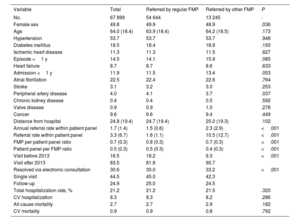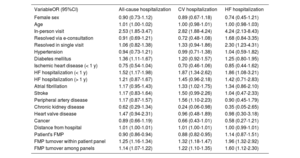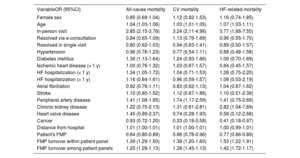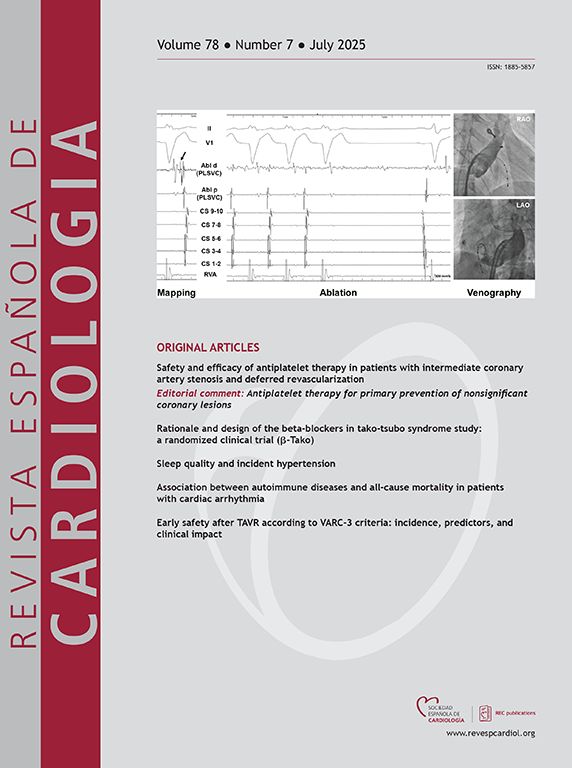
To analyze the relationship between continuity of care in primary care and hospitalizations and mortality among patients referred from primary care to a cardiology service.
MethodsContinuity of care was assessed using 3 measures: a) whether the referral was made by the patient's regular family medicine physician (FMP) or a different FMP, b) FMP turnover within a patient panel, and c) turnover of the referring FMP among different patient panels. The association between continuity of care and hospitalizations and mortality was assessed using a multivariate analysis, with adjustment for potential confounding variables. The results are expressed as odds ratios (OR) with 95% confidence intervals (95%CI).
ResultsA total of 67 889 patients, referred from 2010 to 2023, were included, of whom 80.5% were referred by their FMP. Patients referred by an FMP other than their own had a higher annual referral rate (2.3 [2.9]) vs 1.5 [0.6]); P<.001) and were assigned to panels with a higher referral rate (10.5 [12.7] vs 1.6 (1.1]; P<.001). Patients referred by their FMP had a lower risk of overall hospitalizations (OR, 0.90; 95%CI, 0.86-0.94), hospitalizations for cardiovascular causes (OR, 0.88; 95%IC, 0.82-0.95), all-cause mortality (OR, 0.84; 95%CI, 0.80-0.89), cardiovascular-related mortality (OR, 0.86; 95%CI, 0.78-0.96), and heart failure-related mortality (OR, 0.77; 95%CI, 0.66-0.89).
ConclusionsContinuity of care, measured by the persistence of the FMP within the same patient panel, improves health outcomes by reducing hospitalizations and mortality, as well as the number of cardiology service referrals.
Keywords
Identify yourself
Not yet a subscriber to the journal?
Purchase access to the article
By purchasing the article, the PDF of the same can be downloaded
Price: 19,34 €
Phone for incidents
Monday to Friday from 9am to 6pm (GMT+1) except for the months of July and August, which will be from 9am to 3pm







